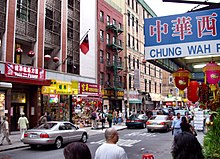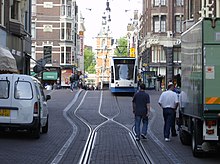
Back امشائية Arabic Fußgängerfreundlichkeit German Caminabilidad Spanish Kõnnitavus Estonian Ibilgarritasun Basque پیادهراهوری Persian Jalankulkijaystävällisyys Finnish Accessibilité piétonne French הליכתיות HE Keleluasaan berjalan ID


In urban planning, walkability is the accessibility of amenities by foot.[1] It is based on the idea that urban spaces should be more than just transport corridors designed for maximum vehicle throughput. Instead, it should be relatively complete livable spaces that serve a variety of uses, users, and transportation modes and reduce the need for cars for travel.
The term "walkability" was primarily invented in the 1960s due to Jane Jacobs' revolution in urban studies. In recent years, walkability has become popular because of its health, economic, and environmental benefits.[2] It is an essential concept of sustainable urban design.[3] Factors influencing walkability include the presence or absence and quality of footpaths, sidewalks or other pedestrian rights-of-way, traffic and road conditions, land use patterns, building accessibility, and safety, among others.[4]
- ^ Lo, Ria Hutabarat (2009). "Walkability: what is it?". Journal of Urbanism: International Research on Placemaking and Urban Sustainability. 2 (2): 145–166. doi:10.1080/17549170903092867. S2CID 144907703.
- ^ "Walkability Is Good for You", Bloomberg.com, 11 December 2014
- ^ "S. Grignaffini, S. Cappellanti, A. Cefalo, "Visualizing sustainability in urban conditions", WIT Transactions on Ecology and the Environment, Vol. 1, pp. 253-262, 10 Jun 2008". Archived from the original on 23 February 2012. Retrieved 26 February 2009.
- ^ Online TDM Encyclopedia chapter on pedestrian improvements
© MMXXIII Rich X Search. We shall prevail. All rights reserved. Rich X Search
